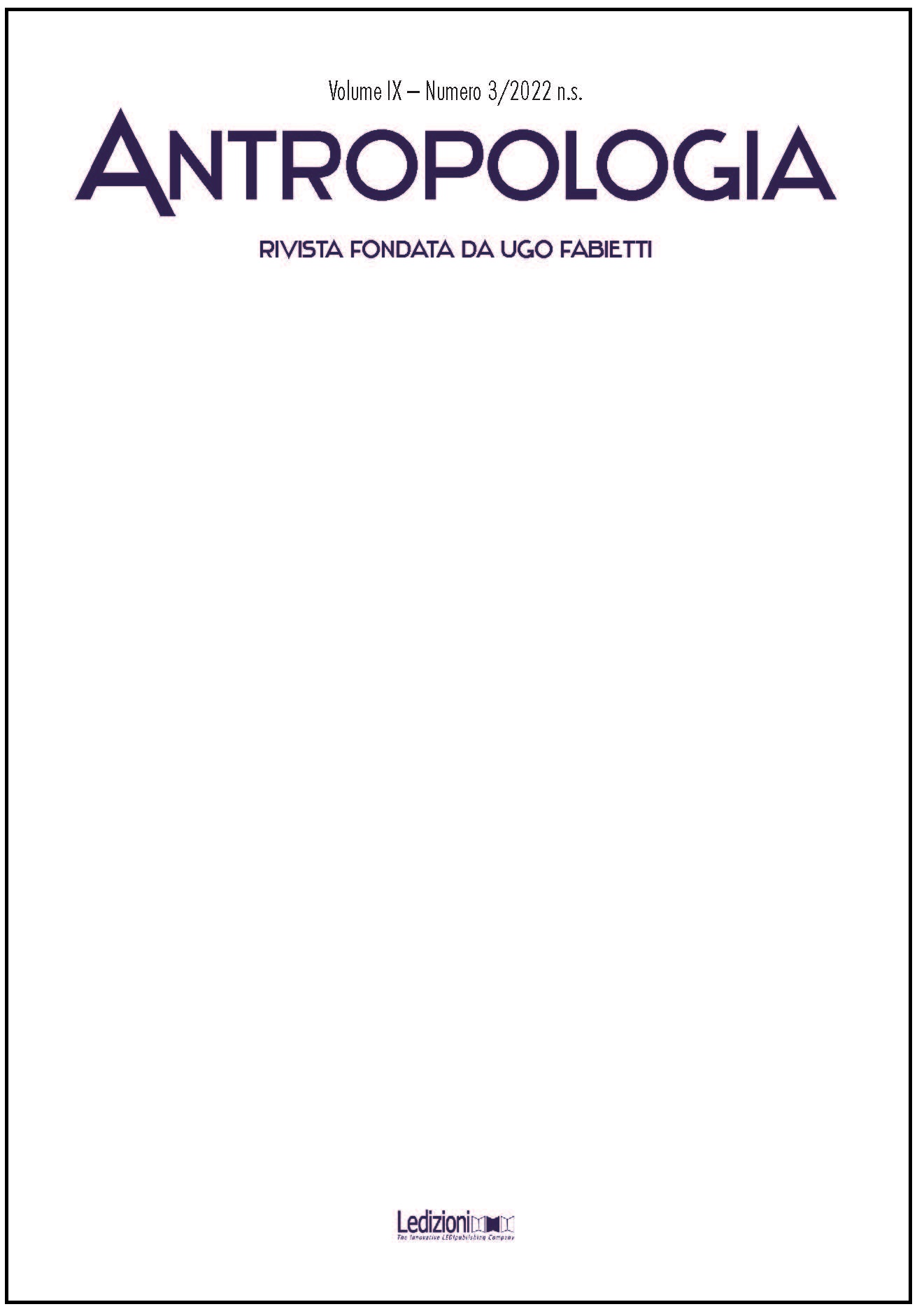Good objects for thinking, good objects for showing. Reflections from an ethnographic workshop on co-created artefacts for understanding and narrating bodily suspensions
DOI:
https://doi.org/10.14672/ada20223pp23-44Keywords:
communication, body suspension, restitution, practice-based cooperation, experimental ethnographyAbstract
In the everyday language, “restitution” means to give something back, an action that is the consequence of a previous offer. The transmission of goods involves relationships, and how this can be applied in the ethnographical interaction? What do we give back and when? The ethnographer establishes a series of moral debts with those who cooperate during the fieldwork: co-constructing data, research participants donate time and trust in change of the visibility of their experiences. The ethnographical practice hence transmits the results of fieldwork interactions (including time, information and carefulness), and involving more people than those who created the data. This process is traditionally dominated by words.
This article is based on a research on meanings associated with body suspension realized in Europe, consisting in the elevation of a protagonist through metal hooks temporary inserted in the skin. Based on the participative construction of symbolic objects with practitioners, the ethnographer uses the handcrafts to communicate with practitioners and they materialize the meetings during the practice, resulting in an artistic collection that was exposed during and after the ethnography. The handcrafts circulated suspension meanings among non-practitioners and they re-oriented the researcher’s gaze during the ethnography. The reflection focuses on the multiple valences of handcrafts as communication tool, reflexive occasion, device for the short-term restitution during the fieldwork, and dissemination strategy.
Published
Issue
Section
License

This work is licensed under a Creative Commons Attribution 4.0 International License.
Authors maintain the copyright of their original work and grant the Journal the right to first publication, licensed after 36 months under a Creative Commons Licence – Attribution, which allows others to share the work by indicating the authorship and first publication in this journal.
Authors may agree to other non-exclusive licence agreements for the distribution of versions of their published work (for example in institutional archives or monographs) under the condition that they indicate that their work was first published in this journal.



